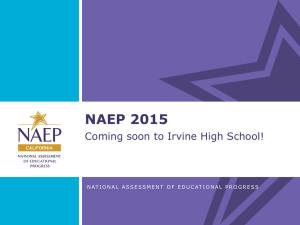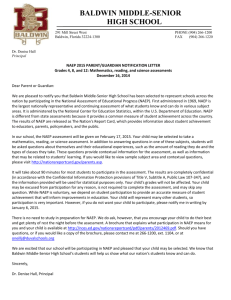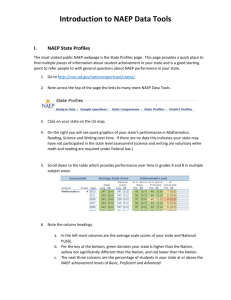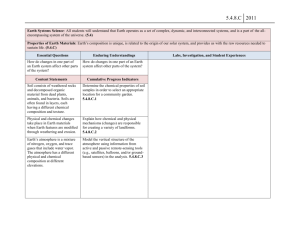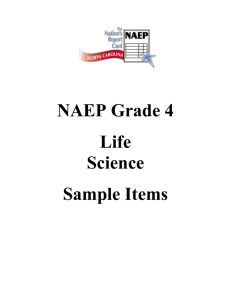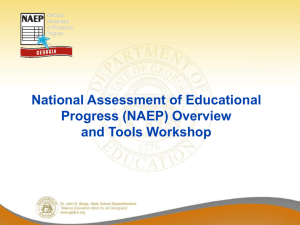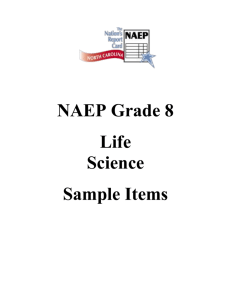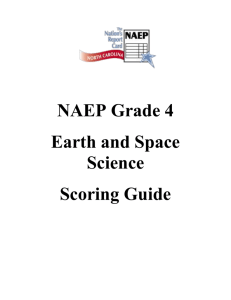The following question refers to the topographic map below, which
advertisement
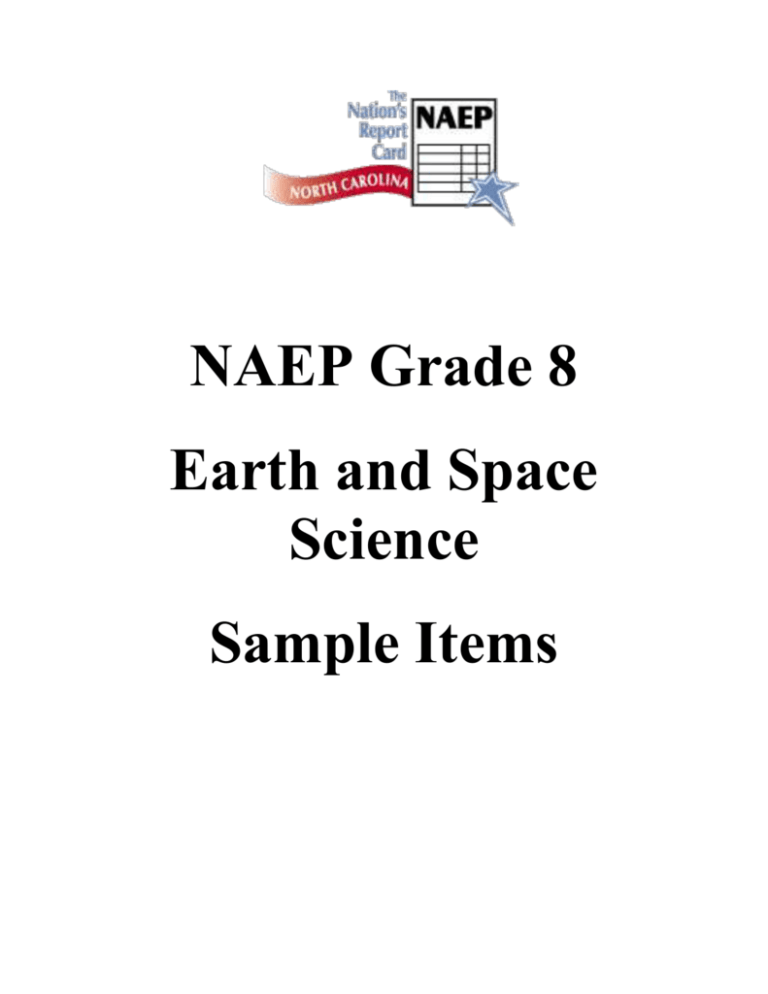
NAEP Grade 8 Earth and Space Science Sample Items National Assessment of Educational Progress (NAEP) Released Items Grade 8 Earth and Space Science The following question refers to the topographic map below, which shows Willow Hill (elevation 312 feet) and Hobbes Creek. On the map, each contour line represents 20 feet of elevation. 1. What is the elevation at point X ? A) 240 feet B) 250 feet C) 280 feet D) 300 feet SOURCE: NAEP Questions Tool; http://nces.ed.gov/nationsreportcard/itmrls/ M. Hickman, NAEP State Coordinator, North Carolina Department of Public Instruction 1 National Assessment of Educational Progress (NAEP) Released Items Grade 8 Earth and Space Science The following question refers to the topographic map below, which shows Willow Hill (elevation 312 feet) and Hobbes Creek. On the map, each contour line represents 20 feet of elevation. 2. In which general direction does Hobbes Creek flow? A) To the north B) To the east C) To the south D) To the west SOURCE: NAEP Questions Tool; http://nces.ed.gov/nationsreportcard/itmrls/ M. Hickman, NAEP State Coordinator, North Carolina Department of Public Instruction 2 National Assessment of Educational Progress (NAEP) Released Items Grade 8 Earth and Space Science The following question refers to the topographic map below, which shows Willow Hill (elevation 312 feet) and Hobbes Creek. On the map, each contour line represents 20 feet of elevation. 3. Which side of Willow Hill has the most gradual slope? A) North side B) East side C) South side D) West side 4. Which of the following best explains why the pressure inside a high-flying airplane must be controlled? A) At high altitudes there is greater atmospheric pressure than on the surface of the Earth. B) At high altitudes there is lower atmospheric pressure than on the surface of the Earth. C) If the cabin is not pressurized, ozone and other upper atmospheric gases will enter the airplane. D) If the cabin is not pressurized, carbon dioxide will escape from the airplane. SOURCE: NAEP Questions Tool; http://nces.ed.gov/nationsreportcard/itmrls/ M. Hickman, NAEP State Coordinator, North Carolina Department of Public Instruction 3 National Assessment of Educational Progress (NAEP) Released Items Grade 8 Earth and Space Science The following question refers to shadows created by sunlight. 5. If you go outside on a sunny day, you will make a shadow. At some times of day your shadow is longer than you are. At other times of day it is shorter than you are. How can this difference in the length of your shadow be explained? (You can use a drawing to help explain your answer.) The following question refers to shadows created by sunlight. 6. Suppose that for a science project you wanted to find exactly how much the length of a shadow changes during the day. Describe both the materials and the procedures you would use to make these observations. The following question refers to shadows created by sunlight. 7. If you measured your shadow at noon during the summer and at noon during the winter, would the measurements be the same or would they be different? Explain your answer. 8. The Earth's Moon is A) always much closer to the Sun than it is to the Earth B) always much closer to the Earth than it is to the Sun C) about the same distance from the Sun as it is from the Earth D) sometimes closer to the Sun than it is to the Earth and sometimes closer to the Earth than it is to the Sun SOURCE: NAEP Questions Tool; http://nces.ed.gov/nationsreportcard/itmrls/ M. Hickman, NAEP State Coordinator, North Carolina Department of Public Instruction 4 National Assessment of Educational Progress (NAEP) Released Items Grade 8 Earth and Space Science 9. Cleopatra's Needle is a large stone monument that stood in an Egyptian desert for thousands of years. Then it was moved to New York City's Central Park. After only a few years, its surface began crumbling. What probably caused this crumbling? New York City wants to keep Cleopatra's Needle in the same location in Central Park. How can the city prevent further damage to the stone? SOURCE: NAEP Questions Tool; http://nces.ed.gov/nationsreportcard/itmrls/ M. Hickman, NAEP State Coordinator, North Carolina Department of Public Instruction 5 National Assessment of Educational Progress (NAEP) Released Items Grade 8 Earth and Space Science 10. Which of the following would be the best model to show the interactions between water and the Sun's heat energy in cycles of precipitation? A) A light shines on an aquarium covered with glass, and water droplets form on the inside of the glass. B) A light shines on a closed cardboard box containing a plant. C) A light shines on a man's face. Droplets of sweat form on his face as he exercises. D) A light shines on a glass of iced tea. Water droplets form on the outside of the glass. SOURCE: NAEP Questions Tool; http://nces.ed.gov/nationsreportcard/itmrls/ M. Hickman, NAEP State Coordinator, North Carolina Department of Public Instruction 6
